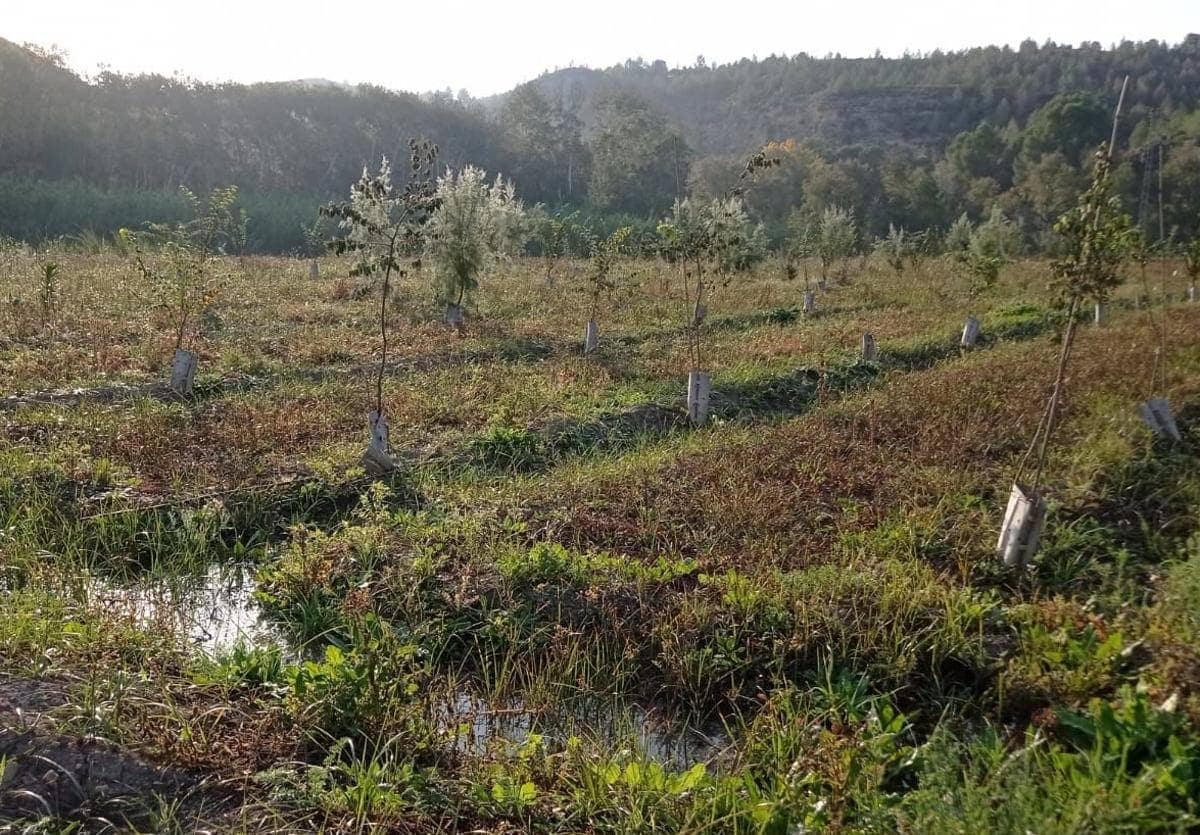One of the many actions of the FLUVIATILIS project is to restore the bosch on the shores of a Murcian area called Finca de La Huertecica, where the course of average survival of replanted species is currently above 75%.
After ten months of maintenance work on the more than 3,000 seedlings introduced in La Huertecica, an average survival rate of 75% has been achieved and eight of the twelve species have very high survival rates (more than 85%). Maintenance tasks have been critical to achieving these results, which have mainly consisted of clearing weed vegetation, protection from herbivores, periodic watering of the plantations and the maintenance of the irrigation network.
replanted forest
Las species with the highest survival rate (between 80% and 100%) include tamarix (Tamarix sp.), willow (Salix sp.), hackberry (Celtis australis), elm (Ulmus minor), narrow-leaved ash (Fraxinus angustifolia), poplar (Populus nigra), white poplar (Populus alba) and the cornicabra (Pistacia terebinthus). With an average success rate are the aladierno (Rhamnus alaternus), the elderberry (Sambucus nigra) and the scaup (Nerium oleander). Finally, the emborrachacabra (Coriaria myrtifolia) showed very low success rates, less than 10%.
Most of the species with low rooting rates were introduced as 1-juice seedlings (12 months after germination) in small bunches (200 cc or 300 cc), so they were small plants that suffered from grass and that did more difficulties thrive with staggered watering over time.
In addition, some species, such as the emborrachacabra and the elderberry, have complicated implantation. On the contrary, the species with a high survival rate were introduced from larger seedlings grown in alveoli with a volume of more than 1 liter, with the exception of the cornicabra which was used in the alveoli. plots further from the river and with less grass.
This intervention is part of the FLUVIATILIS project, with the objective to restore the riparian forest on an old plum plantation. This will also mean the expansion and connection of the forest masses of the Sotos Nature Reserve Forests of Ribera de Cañaverosa, setting a maximum of 2,000 tons of CO2 over the next 40 years, and reducing the water footprint of the river basin by up to 320,000,000 l/year. In addition to the association’s staff, more than 100 volunteers, authorities and more than 120 schoolchildren from nearby educational centers participated in the implementation of the project.
The overall objective of the FLUVIATILIS project is conservation and rehabilitation ecosystems rivers, increasing their resilience to climate change and providing ecosystem services through river management, promoting shared management of rivers and promote the integration and participation of public servicesthe economic sectors and the general citizenry.
FLUVIATILIS benefits from a call for assistance, promoted by the Biodiversity Foundation of the Ministry for the Ecological Transition and the Demographic Challenge (MITECO), for major transformative projects of a scientific-technical nature. aimed at promoting the bioeconomy and the contribution to the ecological transition, in the context of the Recovery, Transformation and Resilience Plan (PRTR), funded by the European Union – NextGenerationEU.
The rehabilitation of the water infrastructure carried out last year allowed the necessary irrigation of establishment and support of plantationsallowing the number of trees to be kept to a minimum and thereby ensuring the survival of the replanted trees.

